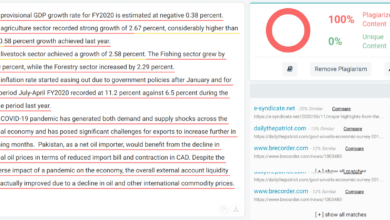Data Science Demystified: Insights, Techniques, and Best Practices
In this day and age, data-driven decision-making is rapidly becoming the norm. Companies across the globe are beginning to realize the power of data science to gain insights and drive business growth. The increasing reliance on data science has sparked the need for professionals skilled in data mining and analysis. However, many organizations need a more comprehensive understanding of what Data Science entails and how to best use it. You may choose Data Science certification to know it better!
Data Science Demystified is an informative guide to understanding and achieving success with data science. It provides insights, techniques, and best practices for taking full advantage of data science for any organization. We will explore techniques for unlocking the power of data and uncovering valuable insights to help your organization make better decisions and achieve a competitive advantage. This guide is designed to demystify data science so anyone can understand and apply these powerful methods.
What is Data Science?
Data science is the application of scientific methods, processes, algorithms, and systems to derive insights and knowledge from structured and unstructured data. The field has been described as interdisciplinary that combines the effectiveness of mathematics and computer science with the knowledge and insight of business, sociology, and psychology.
Data science is used to analyze large volumes of data in order to uncover patterns, correlations, trends, and other insights. The objective is to obtain a better understanding of the data and the underlying phenomena. It can be used to generate predictions and associations, visualize data, and develop models.
Data science has come to be known as a significantly impactful tool for businesses to gain insights from their data and make informed decisions. Companies in all industries are using data science to improve their operations and make themselves more competitive.
Read More: Difference Between Society and Community
The Key Insights
One of the key insights into data science is that it is a rapidly evolving field. As technology advances and more data becomes accessible, data scientists must adapt to make use of new sources and methods. This means that data scientists must stay updated on the current trends and be prepared to use the latest tools and techniques.
Another key insight is that data science is not a one-size-fits-all solution. Different industries and organizations have different needs, and there is no single, perfect solution. Data scientists must be able to understand the context and apply the appropriate solution for the specific problem.
There is a growing demand for data science professionals. As businesses become increasingly data-driven, there is an increasing need for professionals with technical skills in data mining, analysis, and visualization. These skills are in high demand and data scientists are becoming increasingly valued members of organizations.

Data Science Techniques and Tools
Data science is an incredibly broad field, encompassing many different tools and techniques. Tools and techniques used in data science can range from simple data manipulation tasks, such as importing, cleaning, and formatting data, to more complex tasks, such as machine learning-based predictive modeling.
1. Machine Learning
Machine learning is a branch of data science that focuses on using algorithms to identify patterns in data and make predictions about future data. Commonly used Python libraries for machine learning include sci-kit-learn and TensorFlow.
Scikit-learn is a Python library that offers a wide range of machine learning algorithms, from simple linear regression to more complex ensemble methods such as random forests and gradient boosting.
TensorFlow is an open-source library for machine learning that provides a wide range of functions for creating and training models. It is particularly useful for deep learning and neural networks as it provides many high-level functions that can make the process of building and training a model much easier.
Natural language processing (NLP) is a form of artificial intelligence used to understand and interpret human language. It can be used to process text and extract insights from unstructured data.
Data mining is an activity of extracting and analyzing data from large data sets. This can be used to uncover patterns, trends, and anomalies.
2. Data Manipulation Tools
Data manipulation tools are used to work with datasets and are generally used to carry out data preparation tasks. Commonly used tools for data manipulation are Python, R, and SQL.
Python and R are both scripting languages that can be used to manipulate data in various ways. They both provide high-level libraries for data manipulation, such as Pandas and tidyverse, that can be used to quickly and easily import, clean, and format data.
SQL is a structured query language and is often used for retrieving data from databases. It is particularly useful for exploring data, as it can be used to query the data and obtain summary information such as counts and averages.
3. Data Visualisation
Data visualization is used to explore data and can often highlight patterns or relationships that may not be easily noticed when looking at the data in tabular form. There are a variety of tools available for data visualization, such as matplotlib, ggplot, and Tableau.
Matplotlib is a Python library that can be used to create various types of plots, such as line graphs, histograms, scatter plots, and customized visualizations.
Ggplot is an R library that is used to create data visualizations in a structured and consistent way.
Tableau is a commercial data visualization tool that can be used to create interactive visualizations, allowing users to explore and interact with their data.
4. Data Analysis
Data analysis is used to explore data and draw meaningful insights from it. Commonly used tools for data analysis are Python, R, and Excel. Python and R both provide high-level libraries such as Pandas and tidyverse that can be used to carry out data analysis tasks such as calculating summary statistics and subsetting data.
Excel is an extremely popular tool for data analysis as it is highly accessible and provides a range of features for data analysis, including formulas for calculating summary statistics, charting capabilities, and pivot tables for summarising data.
Read More: How to Hire Python Developers? 7 Steps & 8 Skills – Perfect Explanation
Best Practices In Data Science
Data science is a rapidly evolving sector and it is important for businesses to stay up to date on the latest techniques and best practices. Here are some of the most important best practices to follow when using data science:
- Ensure Accurate Data: The accuracy of data science results depends on the quality of the data used. It is important to use reliable sources of data and ensure it is up to date.
- Use the Right Tool for the Job: Different data science techniques are best suited for different problems. Be sure to use the appropriate technique for the task at hand.
- Follow a Comprehensive Data Exploration Process: Before jumping into data analysis, it is important to understand the data and explore it thoroughly.
- Understand the Implications of Results: Results from data science should be taken in relation to the context and implications. Results may not be meaningful without proper interpretation.
- Keep Data Secure: Data security is a major concern for businesses. It is important to follow best practices to keep data secure and confidential.
Wrapping Up
Data Science is an increasingly important tool for businesses to gain insights and make informed decisions. However, there are many complexities involved in leveraging data science. In this article, we have discussed key insights, techniques, and best practices for data science. By understanding and following these guidelines, businesses can ensure they are taking full advantage of applying Data Science to power growth and transformation. This is the discussion of the data science demystified.



